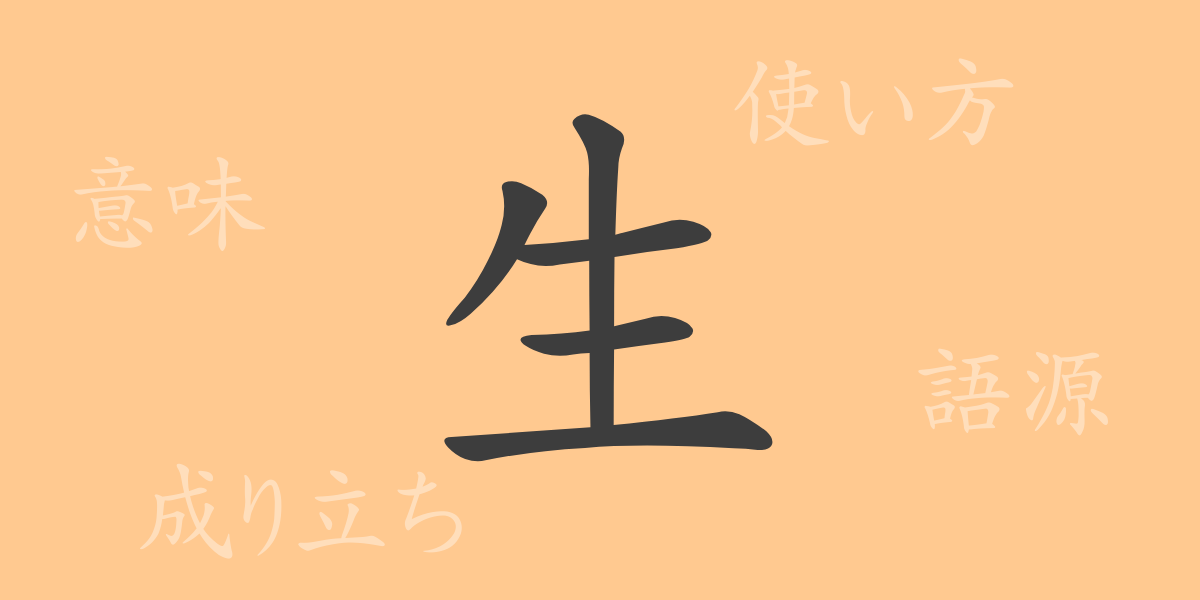Language weaves culture and history, with each kanji bearing profound significance. The kanji ‘生’ (せい) encapsulates the essence of life, a fundamental yet profound character deeply intertwined with our daily existence. This article explores the diverse facets of ‘生’, unveiling its integral role in our daily lives.
Origins of 生
The kanji ‘生’ originates from ancient Chinese pictographs representing a plant sprouting from the ground, symbolizing growth and birth. Over time, it evolved to embody various life-related concepts such as living, life itself, and production, playing a pivotal role across different cultures and languages.
Meaning and Usage of 生
‘生’ is used in various words denoting life, existence, and states such as ‘いきる’ (to live), ‘うまれる’ (to be born), and ‘なま’ (raw). It appears in terms like ‘生活’ (life or lifestyle) and ‘生産’ (production). Additionally, ‘生’ functions as an adjective and adverb, used in phrases like ‘生のまま’ (as is) and ‘生で食べる’ (eat raw).
Readings, Stroke Count, and Radical of 生
The kanji ‘生’ has multiple readings depending on its usage:
- Readings: On’yomi ‘セイ’, ‘ショウ’; Kun’yomi ‘い.く’, ‘う.まれる’, ‘なま’
- Stroke Count: 5 strokes
- Radical: ‘生’ (うまれる)
Phrases and Proverbs Involving 生
Idioms and proverbs featuring ‘生’ are plentiful in Japanese. For example, ‘一生懸命’ (いっしょうけんめい) denotes putting forth effort as if for a lifetime, and ‘生きがい’ (いきがい) represents one’s reason or value for living. The proverb ‘朝生夕死’ (ちょうせいせきし) illustrates the transience of life.
Conclusion on 生
The meanings imbued in a single kanji vary by context. ‘生’ represents concepts from the inception of life to daily living and even the state of food, illustrating its profound connection to our lives. This versatility not only highlights the depth of language but also enriches our cultural understanding, showcasing the richness of our culture through the lens of a single character.

























